.png)
Today, algorithmic decision-making is used in every field; they
evaluate prisoners for parole, triage patients in emergency rooms, and
predict where and when services might be needed. Increasingly people
are asked to evaluate algorithmic decision-making without the
expertise to effectively assess the consequences.
Risky Code
is a digital workshop designed to increase the algorithmic literacy of
workshop participants. The workshop uses information visualization to
communicate underlying algorithmic mechanisms and engage participants
in critical-thinking activities about algorithmic decision-making.
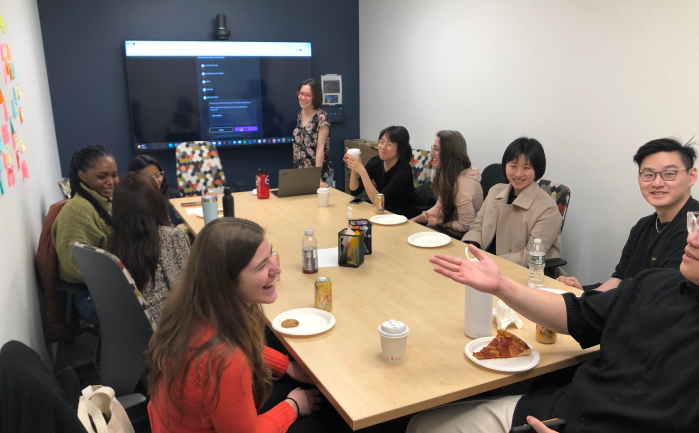
First, the workshop teaches participants about underlying algorithmic
mechanisms and multiple definitions of algorithmic fairness. Next,
participants are asked to pick a scenario where algorithmic
decision-making is used and brainstorm multiple stakeholder groups.
Finally, participants assess how algorithmic decision-making is risker
for some stakeholder groups than others by employing a visual taxonomy
of algorithmic risk.
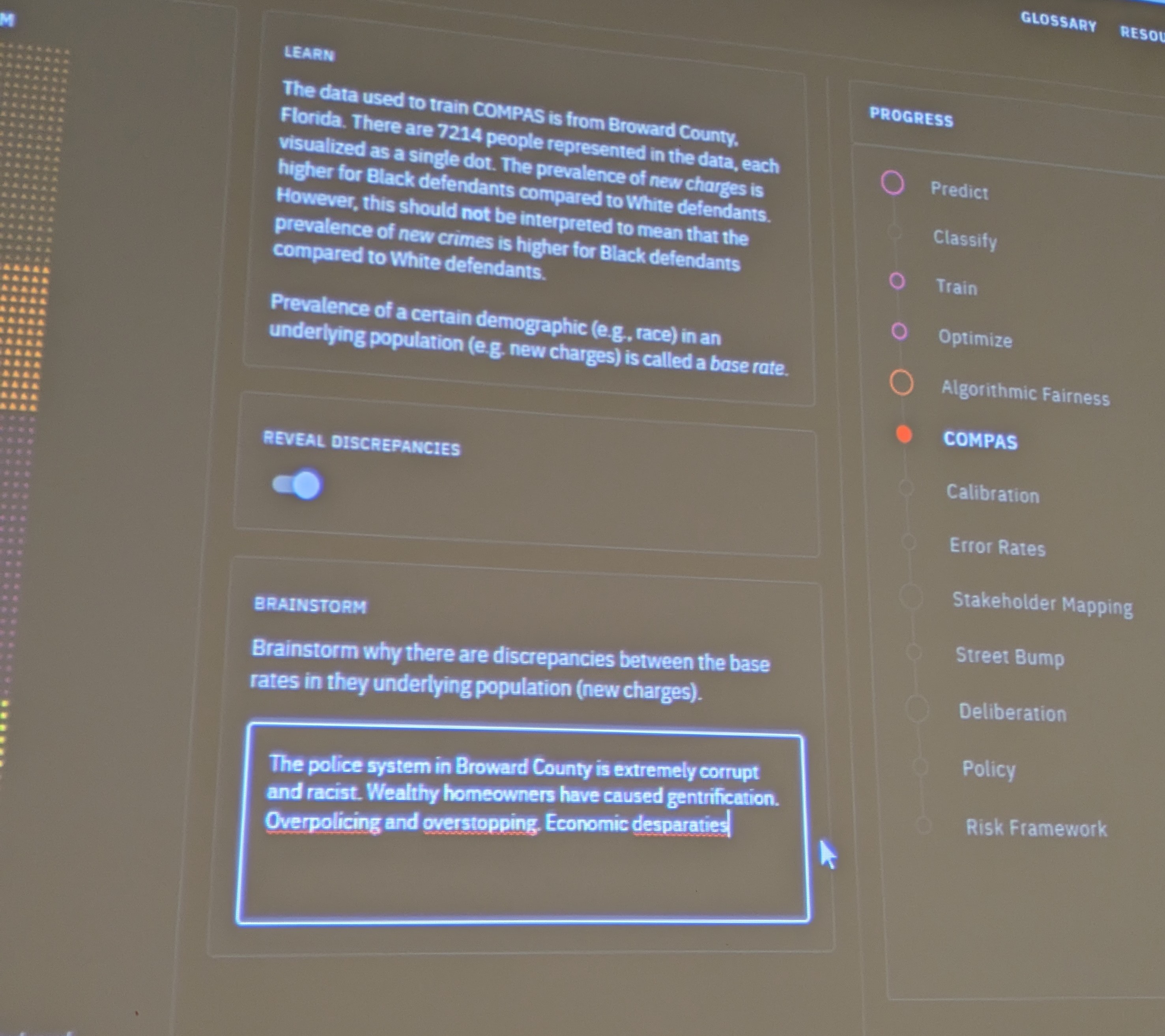
This image on the left shows participants responses to the prompt
brainstorm why there are underlying discrepancies between base rates
in the underlying population. The image below shows a student
facilitating the Risky Code workshop. The workshop is open source and
intended to be navigated and facilitated by anyone interested in
hosting a Risky Code workshop. Additional materials were developed to
aid facilitators who may be interested in hosting a Risky Code
workshop. All materials are hosted on google drive,
making them easily accessible to a workshop facilitator. Additional
materials included are a workshop summary and learning goals, the
workshop script, a slide deck, a glossary of terminology, and pre and
post-surveys.
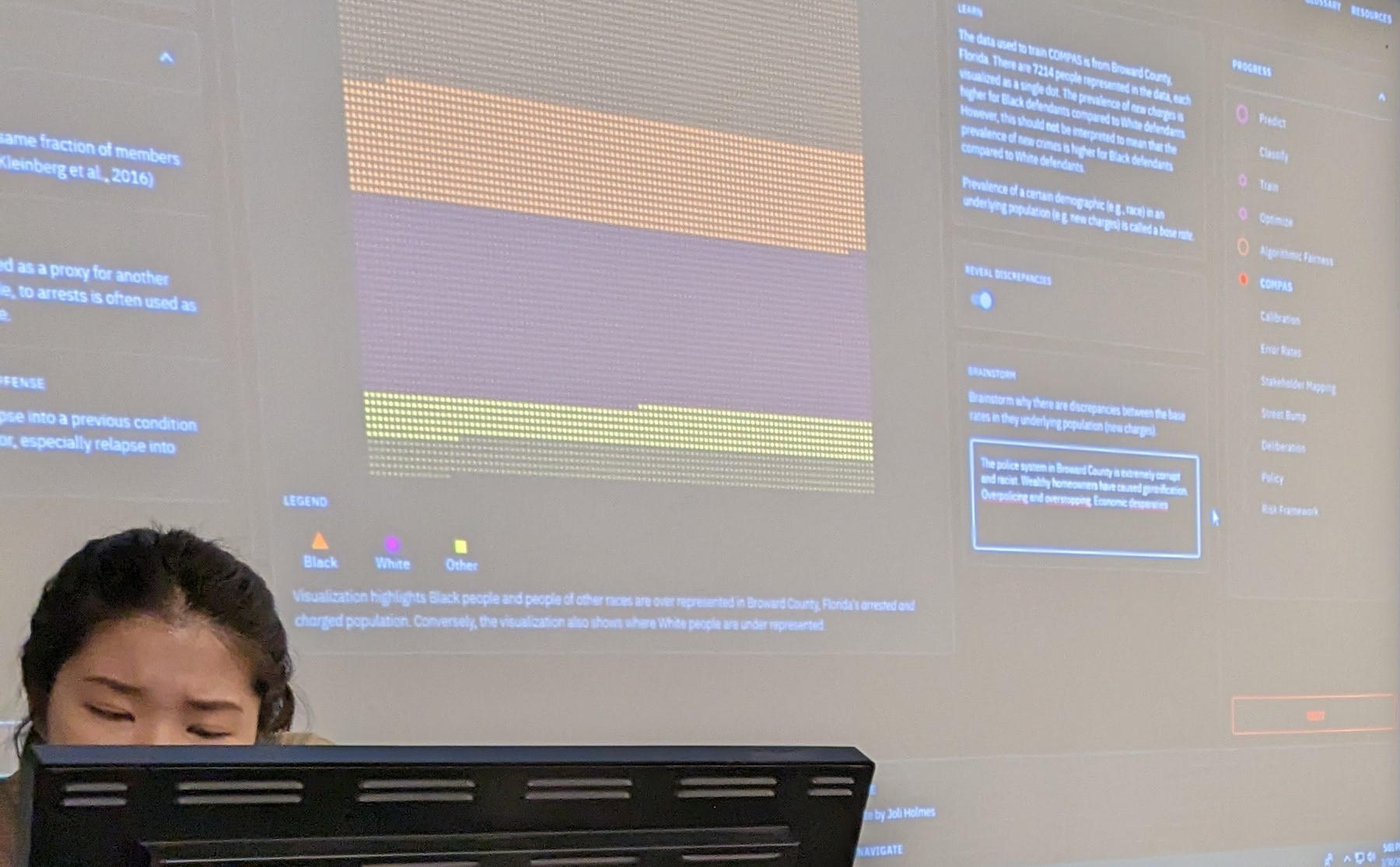
Risky Code takes approximately is comprised of four learning modules,
including, Algorithmic Prediction, Algorithmic Fairness, Stakeholder
Mapping, and Deliberation. The first module, Algorithmic Prediction is
intended increase participants understanding of underlying algorithmic
mechanism.
The first module, Algorithmic Prediction, uses laundry as a metaphor
to explain an algorithmic process. Workshop participants can update
the statistical model and the predictive probability threshold on this
page.
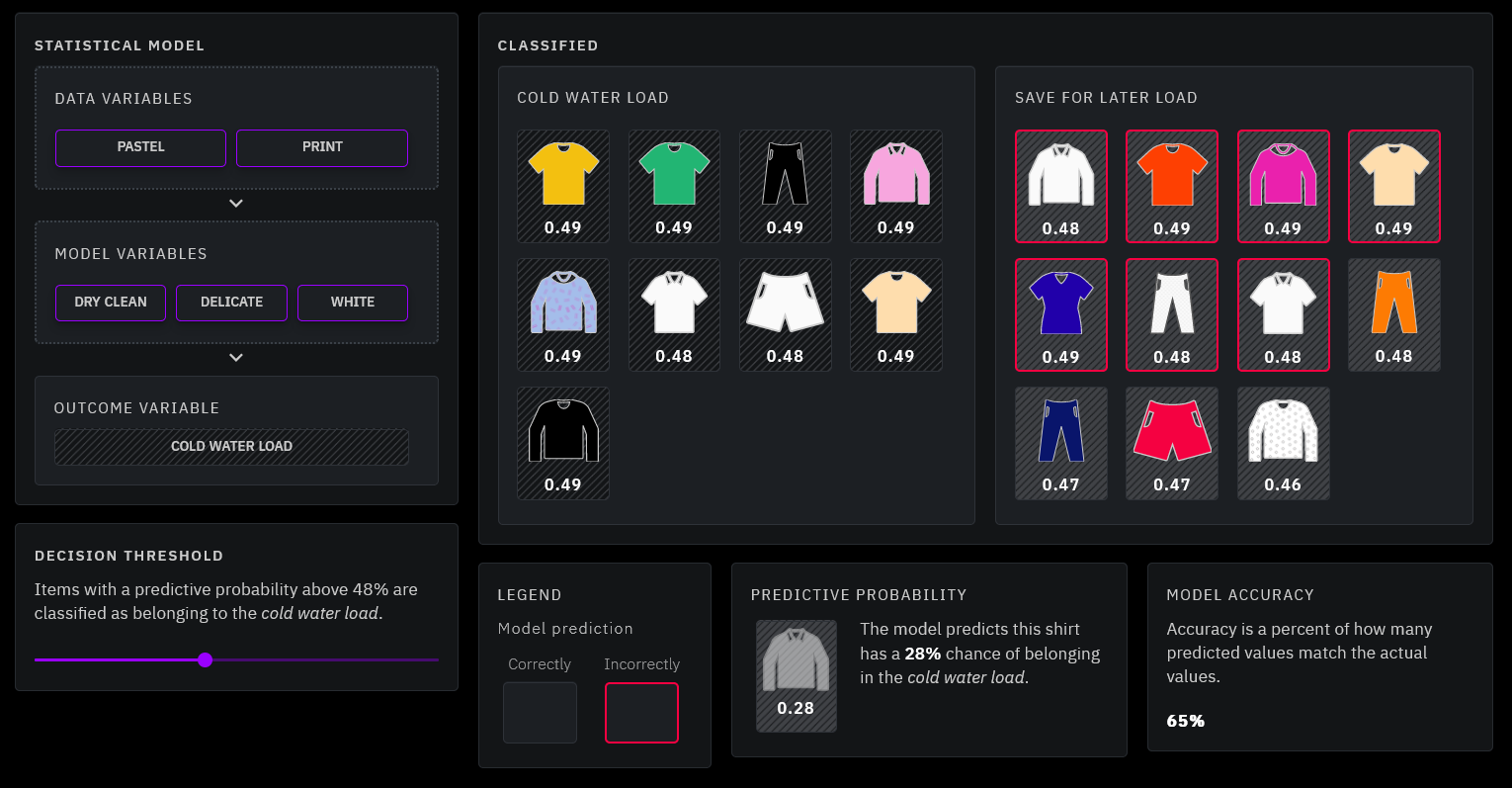
The next three modules, are intended to increase participants ability
to think critically about the social implications of algorithmic
decision-making. The second module, Algorithmic Fairness, is leads
participants through a series of activities to learn about multiple
definitions of algorithmic fairness.
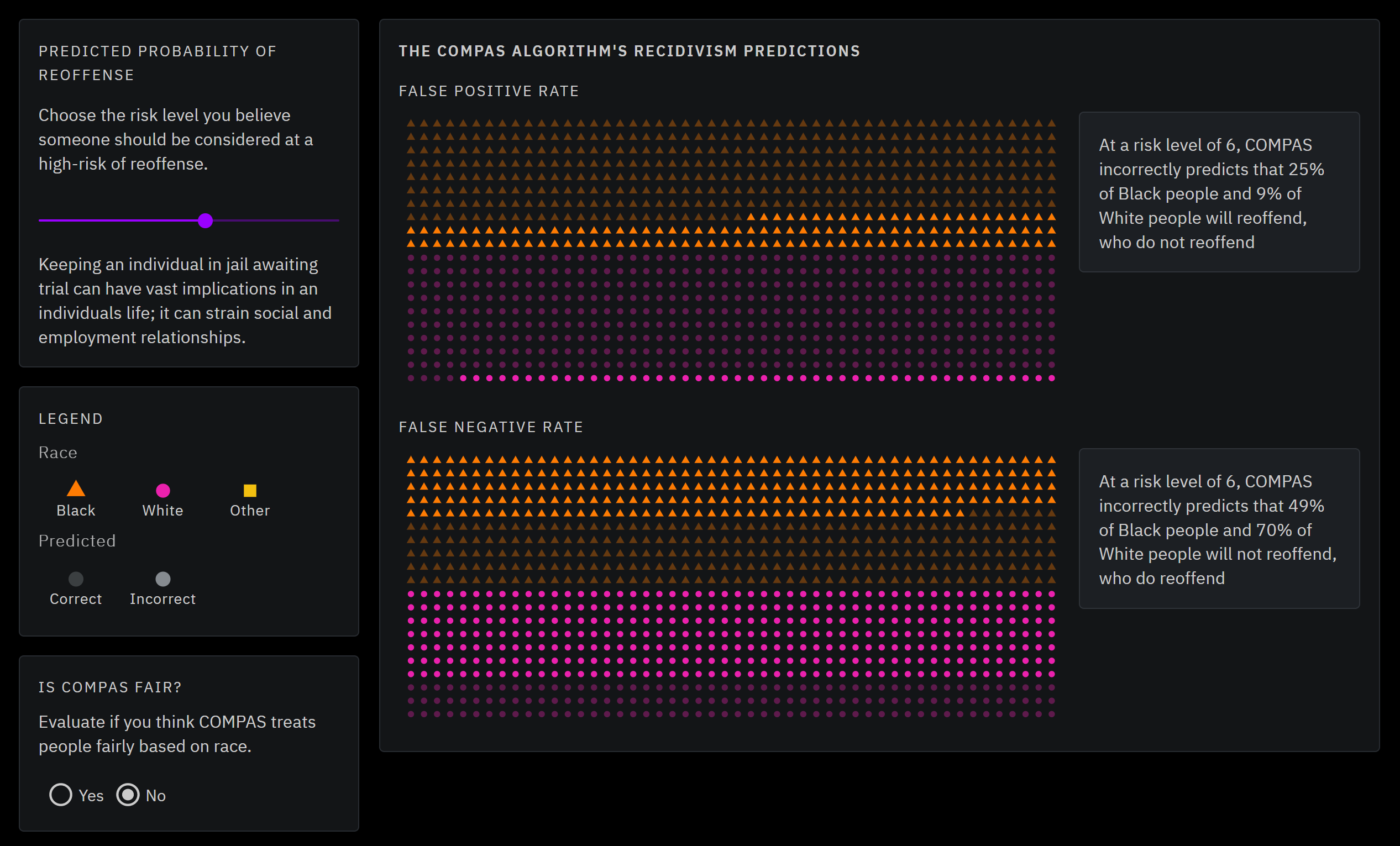
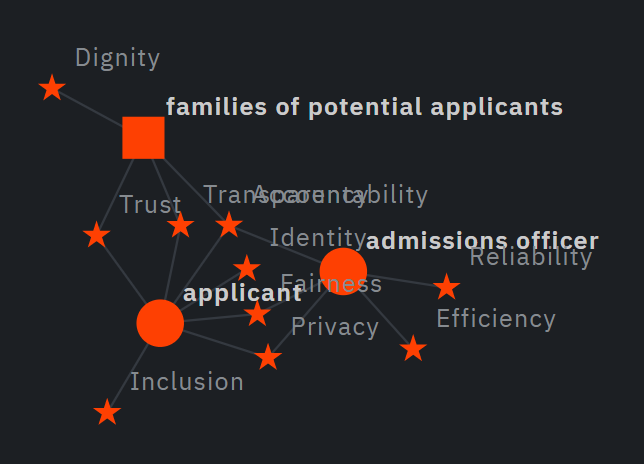
In the next module, Stakeholder Mapping, participants brainstorm
stakeholders and create a network to visualize where stakeholder
values overlap and diverge. Finally, in the last module, Deliberation,
each stakeholder that participants identified in the Stakeholder
Mapping process is shown re-rendered as an individual rather than as a
network. Participants assess the risk of four different metrics,
including, appropriate data use, technical risk, stakeholder values,
and accountability, for each stakeholder group. Once they adjust the
sliders the add each stakeholder to the graph which shows indicates
overall risk.
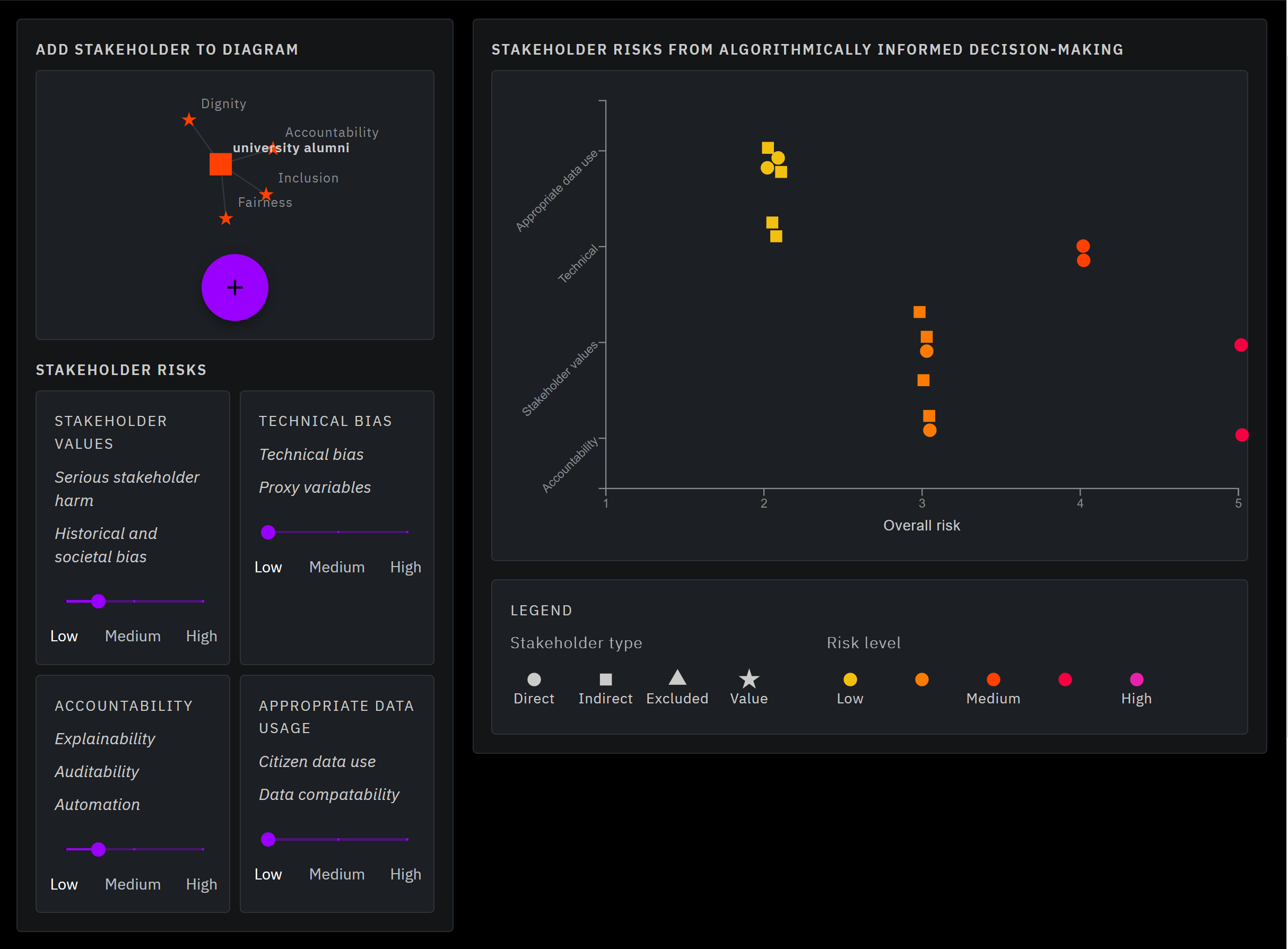
Mapping process is shown re-rendered as an individual rather than as a
network. Participants assess the risk of four different metrics,
including, appropriate data use, technical risk, stakeholder values,
and accountability, for each stakeholder group. Once they adjust the
sliders the add each stakeholder to the graph which shows indicates
overall risk.
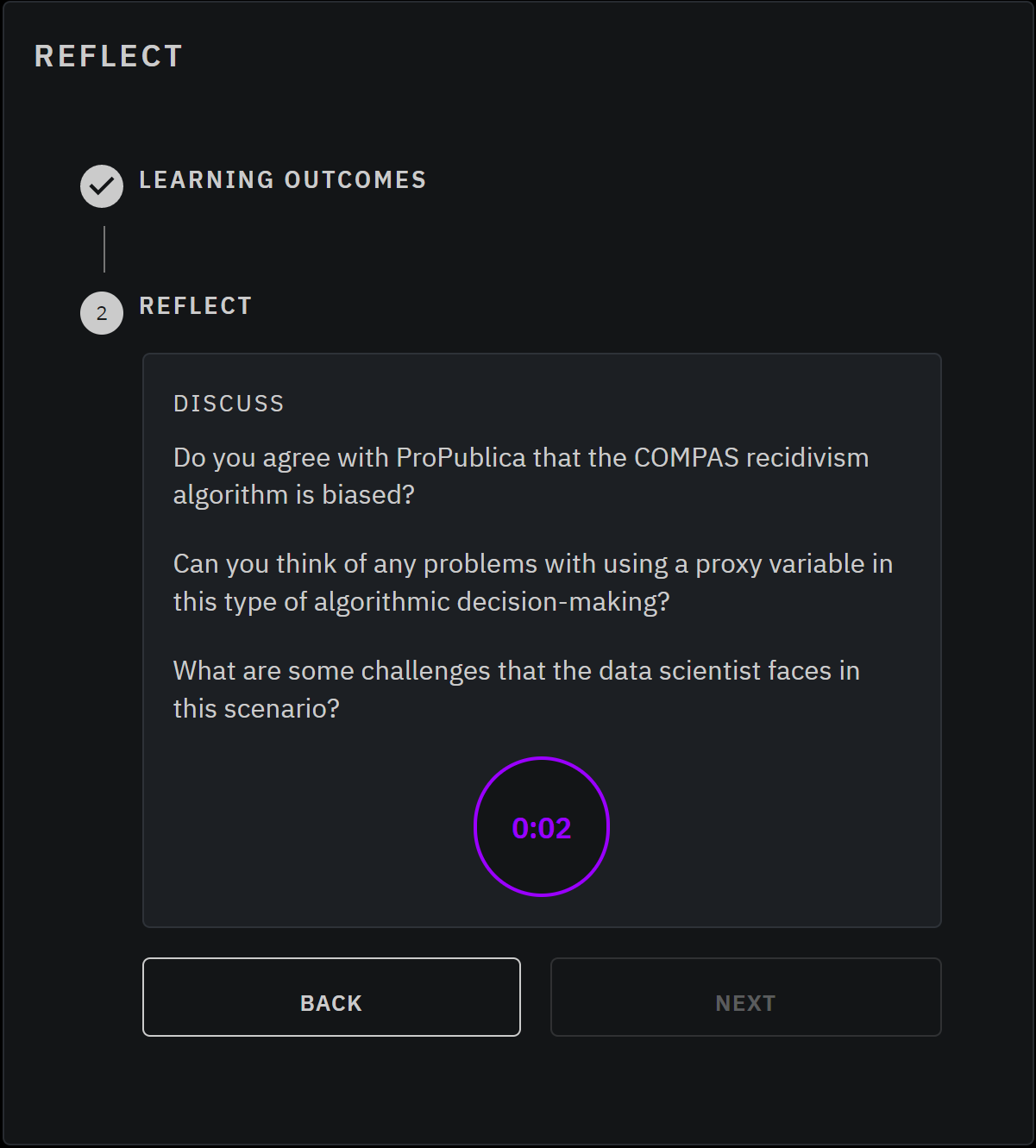
At the end of each module, Risky Code asks participants to take a
moment to reflect on what they learned in the module. Participants are
reminded of the module’s learning outcomes before they are presented
with several questions to discuss and reflect on before moving to the
next module. Reflection is an important part of the experiential
learning process.
.png)







